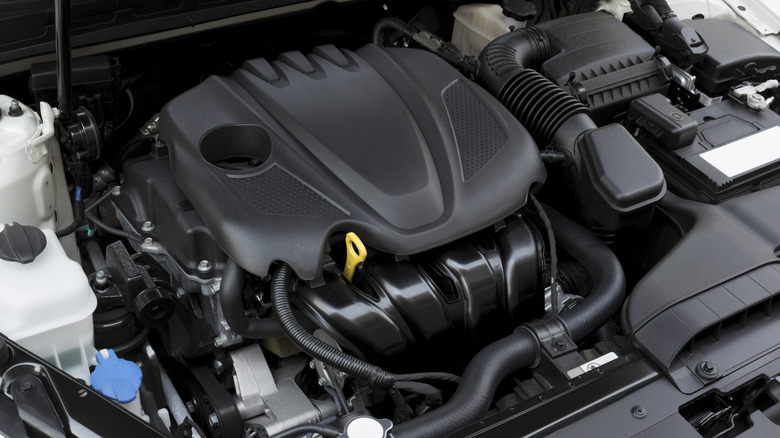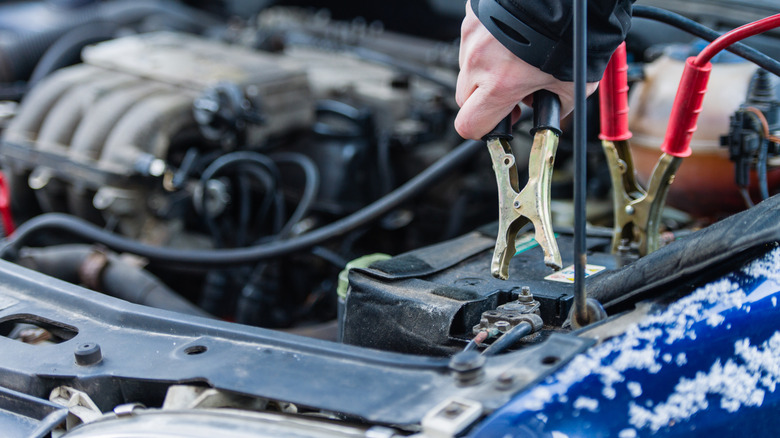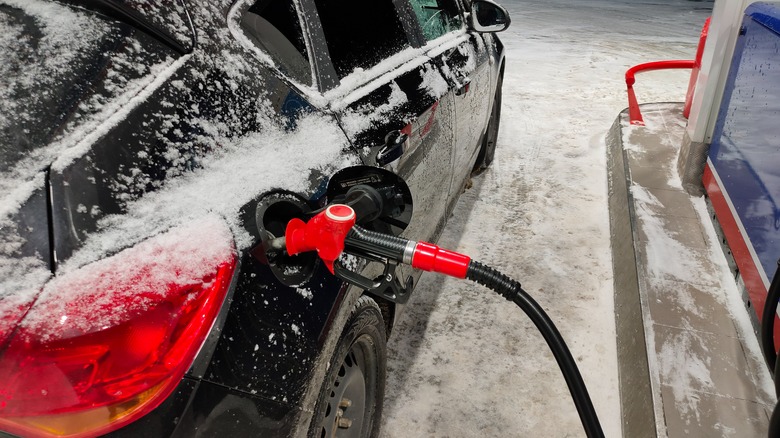Diesel Or Gasoline Engine: Which Is Better For Driving During The Winter?
We may receive a commission on purchases made from links.
When winter hits, it brings more than just chilly temperatures — it also brings a bunch of new challenges. Icy roads can decrease your grip and freezing temperatures that can strain both the batteries and engine components, making driving more stressful. Winter conditions can make even the shortest trips feel daunting, with sluggish starts and long engine warm-up times. Fuel economy also takes a massive hit during the winter, leading car owners to question whether a diesel or gasoline engine is better suited for the winter.
The answer isn't as straightforward, as each engine has its set of strengths and weaknesses when faced with winter conditions. Diesel engines are known for their efficiency, torque, and ability to handle higher compressions. Gasoline engines, on the other hand, are lightweight, smoother, and come with lower maintenance costs. But, when the mercury drops and winter demands more from your vehicle, which engine handles the cold better?
How winter weather affects diesel and gasoline engines
Cold weather puts extra strain on the engine on engine's components, which slows down the engine's ability to warm and reach optimal performance levels. Due to the decreased temperature, engines have to cope with thicker, denser air, which increases the effort required to power the vehicle.
Diesel engines are particularly sensitive to cold weather because diesel fuel and engine oils become more viscous, or thick, in lower temperatures. This increased thickness can make it harder for the engine to start, especially if the temperature drops below freezing or colder than 32 degrees Fahrenheit. Between 10 and 15 degrees Fahrenheit, diesel begins forming into a gel-like form or wax crystals that clog fuel lines, leading to issues like stalling or failure to start. This phenomenon is called cloud point and cold filter plugging point, which refers to the temperature at which fuel begins freezing. When fuel reaches this cloud point, which is typically between minus 18 degrees Fahrenheit and minus 20 degrees Fahrenheit, the fuel appears cloudy.
However, gasoline engines are less affected by cold winter weather compared to diesel engines because gasoline doesn't have the same gelling issue as diesel does. Thanks to the high resistance, gas engines start easily in cold temperatures and their fuel remains fluid across many temperature levels, even in sub-zero conditions. However, these engines may also suffer fuel efficiency losses.
Fuel efficiency in winter
Cold weather affects fuel efficiency differently for diesel and gasoline vehicles, with both experiencing performance changes. For gasoline engines, fuel efficiency drops by about 10% when the temperature reaches 5 degrees Celsius. As noted by the U.S. Department of Energy, gasoline-powered cars see a 12 to 22% drop in fuel efficiency during the winter compared to the summer. This is largely because gasoline engines take a longer time to warm up in cold weather conditions. When we discussed the ideal winter engine warm-up time, we recommended leaving the engine to run for 60 seconds. The longer the engine runs below its ideal temperature, the more likely it is to burn fuel inefficiently, especially on short trips.
Diesel engines, while more efficient than gasoline engines, will also see a drop in fuel efficiency due to cold temperatures. As mentioned, fuels can gel when temperatures fall, especially around minus 5 degrees Celsius, causing a decrease in fuel flow. Because of this cloud point phenomenon, there are so many winterized diesel fuels or additives, such as the 7 In 1 Anti-Gel Diesel Fuel Additive, that are designed to resist gelling in cold temperatures. But, while untreated diesel begins to gel at minus 5 degrees Celsius, winterized diesel can resist gelling from minus 15 to minus 20 degrees Celsius.
Even with these adaptations, diesel engines still suffer a performance hit when it comes to fuel efficiency. Diesel engines are known for producing more torque, which helps them perform a little bit better in snowy or icy conditions. However, they also have to work harder in cold weather to maintain the optimal operating levels, which can lead to a slightly higher fuel consumption.
Cold start performance
Cold starts are an important factor when comparing the performance of gasoline and diesel engines during the winter. Cold starting means starting the car when the engine temperature is lower than the ambient temperature. Gasoline engines have an upper hand in cold starts as the compression level is low and volatility is higher, which helps them ignite easily.
On top of that, gasoline engines warm up faster due to their high idle speed and less efficient thermal management system. With thermal management, a more efficient converts more fuel energy into power. While that's good from a fuel efficiency standpoint, it means there's less heat available to warm up the engine and cabin during cold weather. A quick warm-up time means the engine reaches optimal temperature faster. This makes gasoline engines better than diesel powertrains in the winter if you have short trips.
Diesel engines face a lot of challenges with cold starts. These engines have a higher compression of 14:1 to 25:1 as opposed to the lower 8:1 to 12:1 compressions in gasoline engines. While improving fuel economy, the higher compressions make diesel engines harder to crank in the cold. Many diesel engines require glow plugs or intake heaters to warm the air in the cylinders before ignition. Without these assists, starting a diesel engine in the cold can be slow or even impossible. Also, diesel engines are more thermally efficient, which makes them slow to warm up.



